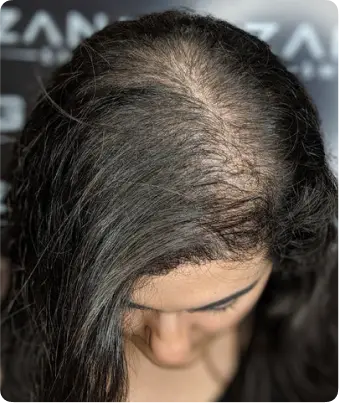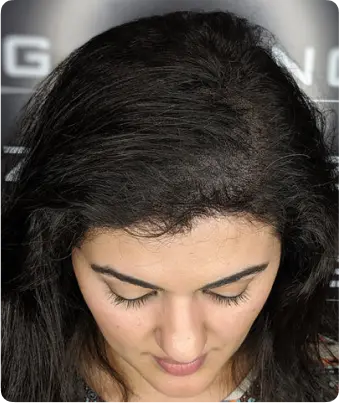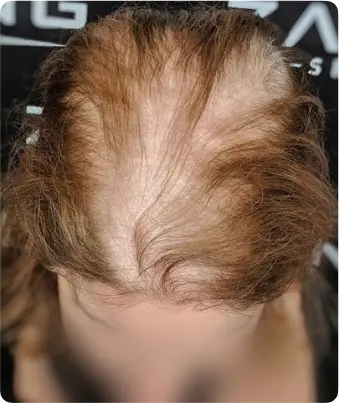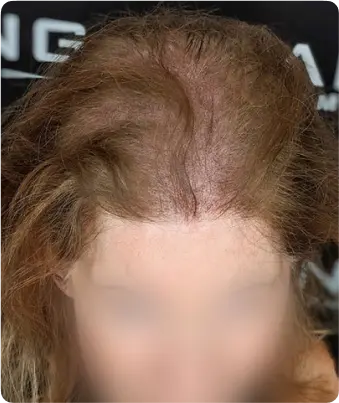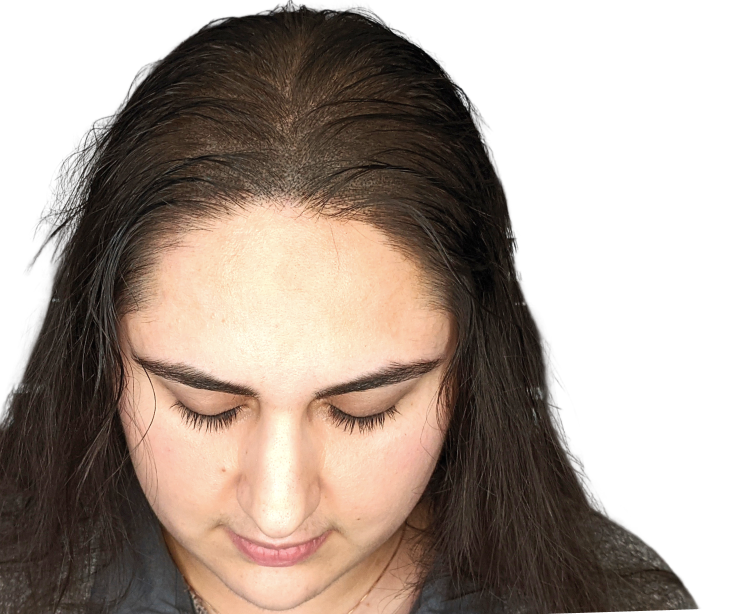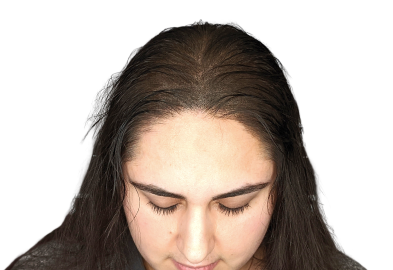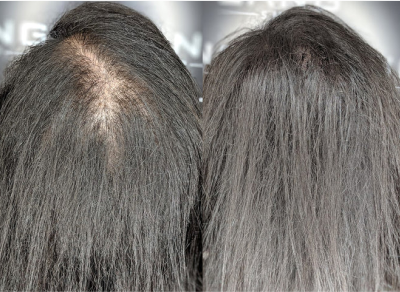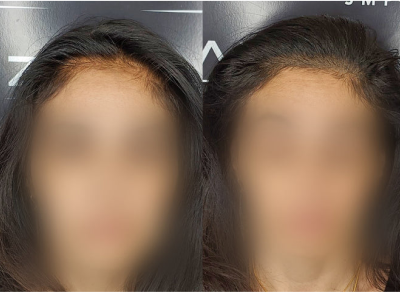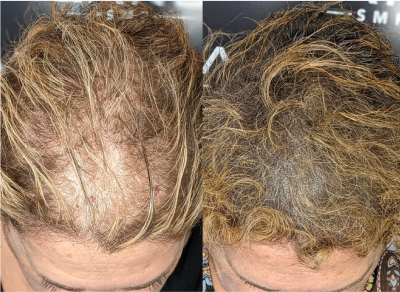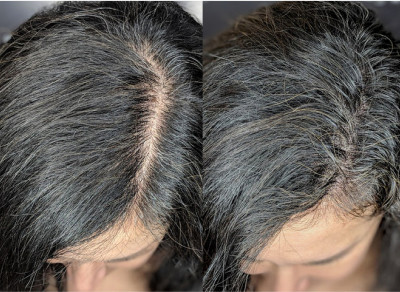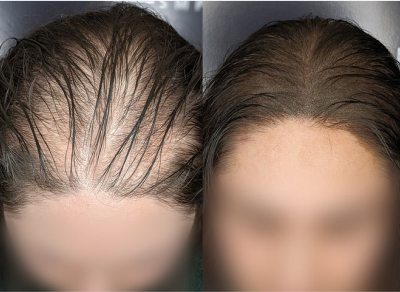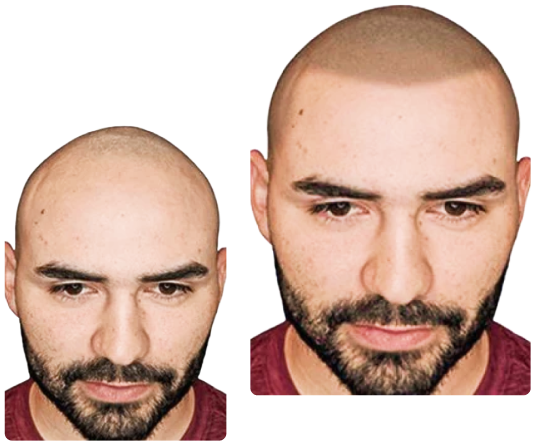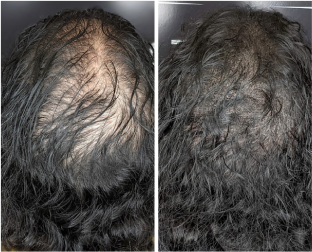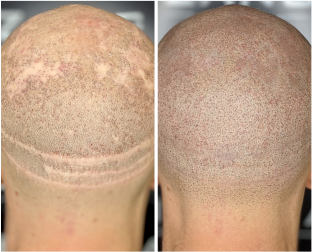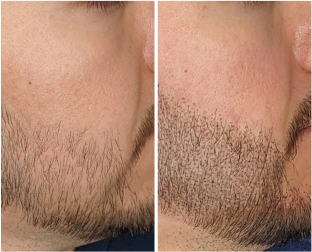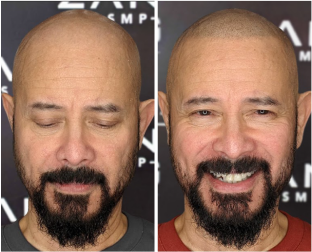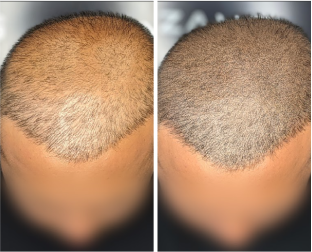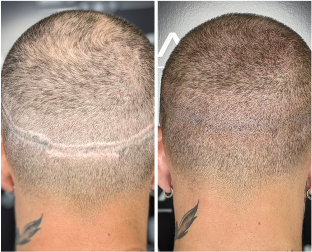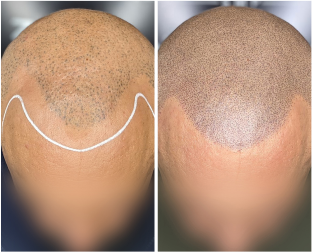Stages of Female Hair Loss
Hair loss in women is assessed using the Ludwig scale. Stage 1 reveals scalp exposure along the part line.
By Stage 2, thinning becomes noticeable in the central scalp. Stage 3 represents severe, diffuse thinning. Another concern, traction alopecia, is caused by prolonged tension from tight hairstyles and leads to permanent hairline loss.
Treatment For Female Pattern Hair Loss: Scalp Micropigmentation
Scalp Micropigmentation (SMP) is an innovative, non-surgical approach to combat female pattern baldness. By implanting organic, plant-based pigments into the scalp, SMP creates the illusion of natural hair follicles, delivering results without downtime.
Zang SMP specializes in achieving realistic results that transform your look. The pigments replicate real follicles, helping cover bald spots and improve hair density without requiring surgery.
The process usually involves two to three sessions. The first two treatments occur a week apart, focusing on areas of thinning. If necessary, a third session can be performed one to three months later to enhance and perfect the results.
Would a Hair Transplant Treat Hair Loss?
For most individuals dealing with female or male pattern hair loss, hair transplants are not the optimal solution. These treatments require donor grafts, which may not be available when thinning is widespread across the scalp.
In addition, placing grafts in areas with existing hair can damage healthy follicles, potentially resulting in a more noticeable thinning.
Scalp micropigmentation (SMP) offers an effective, non-invasive solution that creates the illusion of thicker hair. It restores hair density instantly without harming existing follicles, requires no surgery, and offers immediate results with no downtime.
At Zang SMP, we ensure the highest level of care and quality. Our expert team delivers natural, realistic results that transform your look, boosting your confidence and enhancing your appearance.

